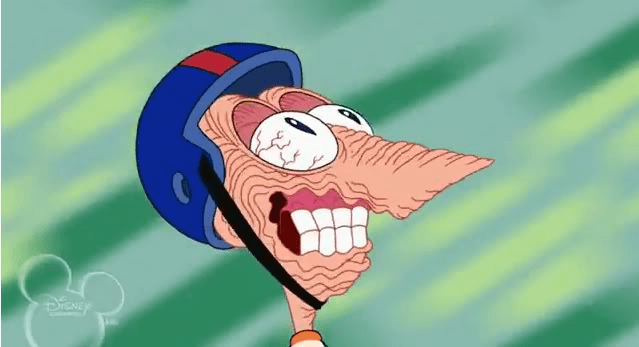Observation or inference: Ms. G wears glasses.
Observation
What are three essential components that a graph must include?
Data, descriptive title, axes labels
How many significant figures does 502 have?
3 (all three numbers are significant)
True or false: a beaker is a precise measurement tool.
False! Beakers are not precise and should not be used for measurement.
What are the two variables in a % error equation?
Theoretical (actual) value, and experimental (measured) value.
How many mL are there in 3 kL?

3,000,000 mL
Make an observation, and a corresponding inference, about the image.
O: He is wearing a helmet, I: he must be doing something dangerous.
O: His face is stretching backwards, I: he must be moving quickly forwards.
Name one way that this graph could be improved? 
Axes labels with units, title
Round 506.32 to two significant figures.
510
Which is not a procedure that you must follow when using a scale:
A. Wait for the scale to read 0.0 before putting anything on it
B. Unplug the scale when you're finished
C. Share the scale with those around you
B. You do not need to unplug the scale when you are finished, but please do turn it off!
How long will it take this person to travel 40 meters?
20 seconds
Solve this problem without a calcualtor, make sure proper significant figures and units are included in your answer:
68.55 mL - 3.3 mL =
65.3 mL
How many decimals should you record when using a standard meter stick?

Two decimal places (the meter stick has markings for every 0.1 cm, so you should record to the hundredths place (0.01).
Calcuate the percent error if a student measured the mass of 50.0 mL of solution to be 53.5g, when they should have gotten 55.1g
-2.90%
402.34 g / 67 mL =
6.0 g/mL